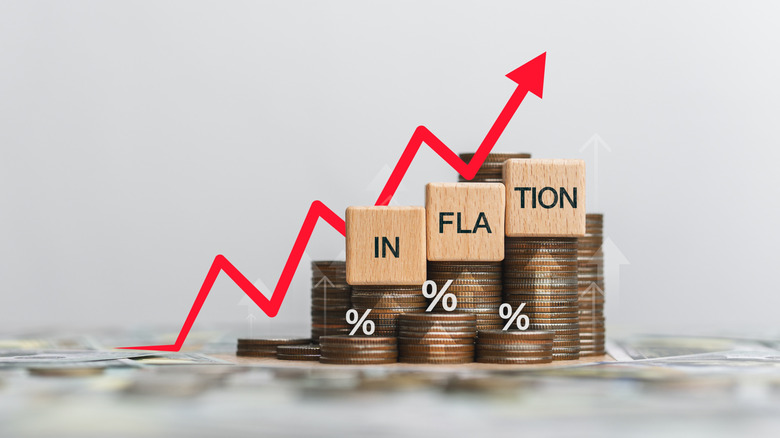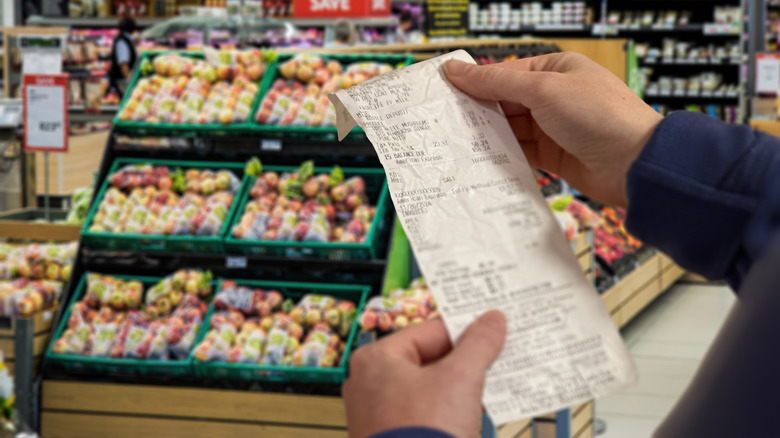Here's What The Price Of Groceries Could Look Like In 2050 With Inflation
I hope you're not expecting grocery prices to decrease any time soon — or really ever again, based on current economic trends. In 2021, the average American household spent an average of $438 monthly and $5,259 annually on groceries which was 6.6% more than what was spent in 2020. In 2050, if economic trends remain consistent with previous years, the average American household is predicted to spend an average of USD $918 monthly and USD $11,016 annually on groceries. Big yikes, am I right?
This is due to the ever-intimidating 'I' word: inflation. Inflation refers to how much goods and services increase in price, reflecting the state of the economy. As inflation rises, the value of a currency falls. For example, $100 in 1950 has the same value (or buying power) as $1,344 does today because the price of goods rose, on average, 3.53% annually over the last 75 years. Assuming inflation continues to increase by an average of 3% each year for the next 25 years, that same $100 in 1950 would equate to $2,814 in 2050. Inflation varies by location, but metropolitan areas tend to be hit hardest. Analysts anticipate inflation in the food-at-home sector (i.e. groceries) to increase by 2050 because of growing population and an agricultural industry struggling due to climate change.
Currently, grocery prices are growing at a higher rate than overall inflation, measuring 0.4% and 0.3% respectively from July 2025 to August 2025. Even withing the industry, certain grocery product prices are rising at quicker rates than others. We can combat inflation in our own lives by limiting the purchase of these products.
What grocery products are getting hit by inflation the hardest?
As we said, some grocery staples are increasing in price faster than others. I'm sure you've heard someone either on the news or in real life complain about egg prices, and there's a reason for it. Data from the U.S. Department of Agriculture shows egg, beef, sweets, and non-alcoholic beverage prices are growing at alarming rates — much faster than they have on average in the last 20 years. Egg prices are speculated to be 24.8% higher this year than they were in 2024, largely because of the continued effects of the Highly Pathogenic Avian Influenza (HPAI) outbreak of 2022. At the same time, beef prices are predicted to grow a hefty 11.6% from last year.
The good news is some grocery items' prices remain unchanged, while others have actually decreased this year. Although fresh vegetables experienced price hikes earlier this year, prices have gone down as the year has progressed, which means the price is estimated to remain flat for 2024 and 2025. The price of oils and fats like extra virgin olive oil are also projected to be lower than last year's prices.
If you're beginning to panic about future trips to the grocery store, you're definitely not alone, but there are ways to 'beat' inflation. Saving money through conscious spending is a struggle for many Americans, yet is a fool-proof strategy in beating inflation nonetheless. Investing is another way to beat inflation. By investing in assets that produce a fiscal net positive over increasing inflation rates, you can stay ahead of the curve.

